All issues

Volume 79, Issue 8
Displaying 1-2 of 2 articles from this issue
- |<
- <
- 1
- >
- >|
Original Contribution
-
- from 12 Years Progress and the Changes of the Duties System -Shizue Imaizumi2009 Volume 79 Issue 8 Pages 631-637
Published: 2009
Released on J-STAGE: January 07, 2010
JOURNAL FREE ACCESSIn the previous reports, I had evaluated the costs of serial sterilization process, including collection of dirty-contaminated items, classification, check, washing, assembling, validation, packing, sterilization, picking, and transportation. As 12 years have passed since then, sterilization process costs were re-evaluated after the change of the duties system (suspension of primary on-site washing, transportation / supply, in-house third party operation, operation rooms, inpatient wards / outpatient sections). All data resources and intelligence related to sterilization process were collected. The resource included one-time operating costs of the sterilization device, average numbers of operating per month, average numbers of sterilized items, sterilization device use costs, validation costs, repair costs, machinery maintenance costs per month, washing costs, personnel expenses, and packing costs. These data led to costs per item of sterilization by autoclaving, ethylene oxide gas (EOG), and plasma with the use of hydrogen peroxide, according to various sizes of containers. As results, sterilization process costs per double-packed item were 57 yen by autoclaving, 177 yen by EOG, and 288 yen by plasma, respectively. Plasma sterilization process costs were higher than EOG sterilization, however, sterilization efficiency should be examined.View full abstractDownload PDF (1945K) -
- Challenge of Earlobe Probe Sensor -Koji Nakai, Harumi Watanabe, Sachiko Takahashi, Hiromi Miyamoto, Atsus ...2009 Volume 79 Issue 8 Pages 638-646
Published: 2009
Released on J-STAGE: January 07, 2010
JOURNAL FREE ACCESSWe studied the utility and drawbacks of the earlobe probe sensor on the percutaneous arterial oxygen saturation (SpO2) measurement. The SpO2 from the earlobe, forehead and finger sensor were measured simultaneously, and then changes of SpO2 readings induced by medical interferences and influence by the sensor attachment were compared among three types of sensor. The SpO2 from the earlobe sensor responded to the rapid change of patient clinical condition as well as from the forehead and finger sensor. The pulse wave signal from the earlobe sensor was more stable compared to those from forehead and finger sensor, but the time to display SpO2 readings after the earlobe sensor attachment was similar to the forehead sensor and it took longer than that in case of the finger sensor attachment. Some cases were difficult to measure SpO2 because of extremely thin earlobe and edema of earlobe. The long-term attachment of the earlobe sensor did not leave any surface imprint on the patient skin that is often found with the use of forehead and finger sensor. Also no patient had removed the earlobe sensor on a voluntary basis. While the SpO2 measurement with the earlobe sensor may be affected by several factors such as the earlobe shape and the peripheral circulation, it is the least painful for the patient. The active utilization of the earlobe sensor in clinical practice is promising as a new approach of the SpO2 measurement.View full abstractDownload PDF (2510K)
- |<
- <
- 1
- >
- >|